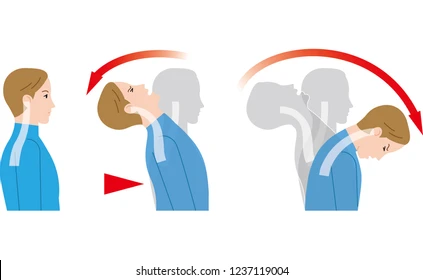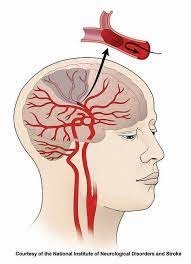what does your body look like after a head-on collision: An Ultimate Guide
what does your body look like after a head-on collision Go through
Since the force of a head-on collision is so great, serious injuries are frequently sustained. The severity of these injuries can vary based on several factors, including the occupants’ physical condition, the speed of the vehicles, and the use of safety equipment. Some of the most common injuries sustained in head-on collisions are:
Whiplash

In a collision, the neck is forcefully snapped forward and backward, resulting in whiplash. Pain, stiffness, and a restricted range of motion are brought on by the overstretching of the neck’s muscles, ligaments, and tendons. Even though this injury is more common in crashes that happen at slower speeds, recovery time may still be weeks or months. In extreme situations, physical therapy or other long-term treatments could be necessary for whiplash.
Traumatic Brain Injury (TBI) and Concussion
A head-on collision can result in a violent blow to the head that may produce a more serious TBI or a concussion. There may be bleeding, swelling, or bruises when the brain contacts the inside of the skull. Concussion symptoms might include headaches, nausea, dizziness, confusion, and memory loss. Early identification and treatment are crucial since severe cases of TBI can result in chronic disability, personality abnormalities, and long-term cognitive problems.
Broken Bones and Fractures
The force of a head-on collision can break bones, particularly in parts of the body like the arms, legs, and ribs that strike the dashboard or steering wheel directly. From simple fractures to complicated breaks requiring months of therapy and surgery, broken bones can take many different forms. Particularly weak points like the ribs can result in more serious wounds like punctures to the lungs.
Dental Trauma and Facial Injuries

In a head-on collision, the face may make contact with the dashboard, airbag, or steering wheel, which could result in cuts, bruises, broken teeth, and fractures of the cheekbones or jaw. Even while airbags are meant to soften impacts, they can still injure people when they activate, especially if the person is positioned too close to the airbag.
Can Safety Measures Reduce the Risk of Head-On Collision Injuries?
Safety practices play an important role in reducing the risk of injury in head-on collisions. Although they cannot completely eliminate the risk of harm, they can significantly reduce injuries and increase life expectancy. The most important safety features include:
Seat Belts
Seat belts are the most effective safety measure in any type of crash. By restraining passengers, seat belts prevent them from being thrown into or out of the vehicle. In a head-on collision, a properly fastened seat belt reduces the risk of fatal injuries by nearly 45%. It also reduces the risk of internal injuries and broken bones by keeping the body secure.
Airbags
Airbags are designed to deploy in a fraction of a second during a crash and provide cushioning for the head, neck, and torso. They absorb some of the energy from the impact and reduce the risk of head injuries, including concussions and facial fractures. However, airbags alone are not enough—they must be used in conjunction with seat belts for optimal protection.
Crumple Zones and Modern Vehicle Design
Modern vehicles are designed with crumple zones that absorb the force of a crash. These areas are meant to collapse in a controlled way, minimizing the impact on passengers. The vehicle structure around the passenger compartment has been reinforced to protect occupants and enhance safety.
Emergency Response Preparedness
In the event of a serious head-on collision, emergency personnel play a crucial role in rescuing trapped passengers and providing life-saving care. Advanced extraction equipment and medical intervention can mean the difference between life and death, especially when internal injuries or spinal cord injuries occur.
Psychological Effects After a Head-On Collision

The trauma of a head-on collision extends beyond physical injuries. Many survivors experience psychological effects that can have a profound impact on their quality of life. Post-traumatic stress disorder (PTSD) is a common consequence, with symptoms such as:
Flashbacks and Nightmares
Survivors may relive the collision through vivid flashbacks or nightmares, making it difficult to move on emotionally.
Anxiety and Depression
The psychological toll of a serious accident can lead to heightened anxiety, depression, and feelings of fear or helplessness, especially if the accident resulted in severe injuries or fatalities.
Difficulty Returning to Normal Activities
Some survivors struggle to return to normal activities, including driving or even being a passenger in a vehicle, due to the psychological trauma they’ve experienced.
PTSD and other forms of psychological trauma often require professional treatment, including therapy and sometimes medication. Addressing these issues is crucial, as untreated trauma can persist for years.
How Can a Lawyer Help After a Head-On Collision?
If you have been involved in a head-on collision, it’s essential to contact a personal injury attorney to ensure that you receive the compensation you deserve. An experienced attorney can help with the following:
Legal Representation
A lawyer will guide you through the legal process and represent your interests during negotiations and litigation. They will help you understand your rights, your legal options, and ensure that you don’t settle for less than you deserve.
Accident Investigation
A thorough investigation is essential to determine liability in a head-on collision. Your lawyer will gather evidence, interview witnesses, and consult experts to build a strong case. This may include accident reconstructionists or medical experts to prove the extent of your injuries.
Claim Valuation
Attorneys can assess fair compensation for your injuries, including medical expenses, lost wages, future lost earnings, pain and suffering, and long-term care costs. This comprehensive evaluation ensures that you receive appropriate compensation.
Negotiating with Insurance Companies
Insurance companies often attempt to minimize payments to accident victims. An attorney will advocate on your behalf, ensuring that all aspects of your claim are considered, and negotiate for a fair settlement.
Trial Representation
If your case proceeds to trial, your attorney will defend you in court, present evidence, and make persuasive arguments for maximum compensation. They will ensure that all legal procedures are followed and protect your rights throughout the process.
Conclusion
A head-on collision is a life-altering event that can result in severe physical and psychological injuries. Although safety measures like seat belts and airbags can help reduce the risk of injury, they cannot completely eliminate the potential for serious harm. If you’ve been involved in such an accident, it’s crucial to seek immediate medical attention and consult with an experienced personal injury attorney to help you navigate the complex legal process and secure the compensation you deserve.
Frequently Asked Questions
1. What is the most common injury in a head-on collision?
Whiplash is one of the most common injuries caused by the rapid forward and backward movement of the neck during an accident.
2. Can airbags prevent all injuries in a head-on collision?
While airbags provide significant protection, they cannot prevent all injuries, especially in high-speed crashes.
3. How does PTSD affect crash survivors?
Survivors may experience PTSD symptoms such as flashbacks, anxiety, and depression, which can significantly affect their quality of life.
4. Can a lawyer help me with a head-on collision case?
Yes, a lawyer can provide legal representation, investigate the accident, assess the value of your claim, and negotiate with insurance companies on your behalf.
5. What factors affect the severity of injuries in a head-on collision?
The speed and weight of the vehicles involved, along with the use of safety features like seat belts and airbags, can greatly impact the severity of injuries.
6. What should I do immediately after a head-on collision?
Seek medical attention, document the accident, and contact a personal injury attorney to protect your rights and pursue compensation.read more